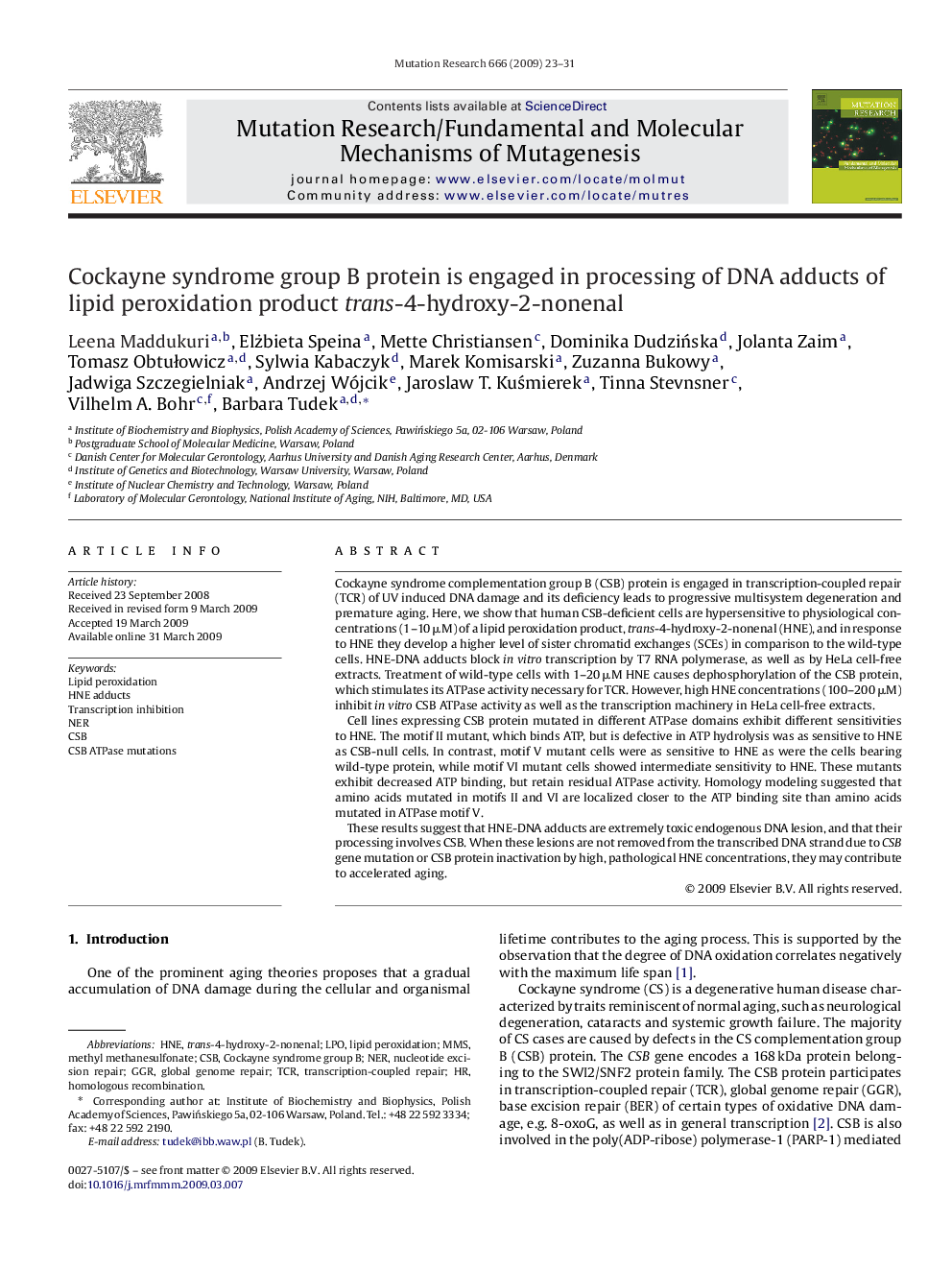| کد مقاله | کد نشریه | سال انتشار | مقاله انگلیسی | نسخه تمام متن |
|---|---|---|---|---|
| 2147007 | 1548385 | 2009 | 9 صفحه PDF | دانلود رایگان |

Cockayne syndrome complementation group B (CSB) protein is engaged in transcription-coupled repair (TCR) of UV induced DNA damage and its deficiency leads to progressive multisystem degeneration and premature aging. Here, we show that human CSB-deficient cells are hypersensitive to physiological concentrations (1–10 μM) of a lipid peroxidation product, trans-4-hydroxy-2-nonenal (HNE), and in response to HNE they develop a higher level of sister chromatid exchanges (SCEs) in comparison to the wild-type cells. HNE-DNA adducts block in vitro transcription by T7 RNA polymerase, as well as by HeLa cell-free extracts. Treatment of wild-type cells with 1–20 μM HNE causes dephosphorylation of the CSB protein, which stimulates its ATPase activity necessary for TCR. However, high HNE concentrations (100–200 μM) inhibit in vitro CSB ATPase activity as well as the transcription machinery in HeLa cell-free extracts.Cell lines expressing CSB protein mutated in different ATPase domains exhibit different sensitivities to HNE. The motif II mutant, which binds ATP, but is defective in ATP hydrolysis was as sensitive to HNE as CSB-null cells. In contrast, motif V mutant cells were as sensitive to HNE as were the cells bearing wild-type protein, while motif VI mutant cells showed intermediate sensitivity to HNE. These mutants exhibit decreased ATP binding, but retain residual ATPase activity. Homology modeling suggested that amino acids mutated in motifs II and VI are localized closer to the ATP binding site than amino acids mutated in ATPase motif V.These results suggest that HNE-DNA adducts are extremely toxic endogenous DNA lesion, and that their processing involves CSB. When these lesions are not removed from the transcribed DNA strand due to CSB gene mutation or CSB protein inactivation by high, pathological HNE concentrations, they may contribute to accelerated aging.
Journal: Mutation Research/Fundamental and Molecular Mechanisms of Mutagenesis - Volume 666, Issues 1–2, 18 June 2009, Pages 23–31